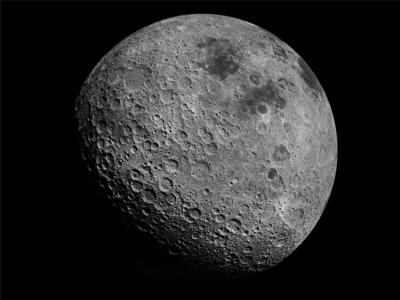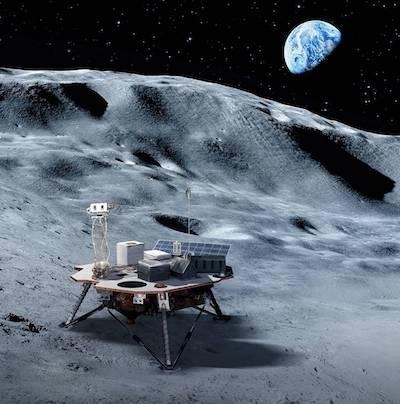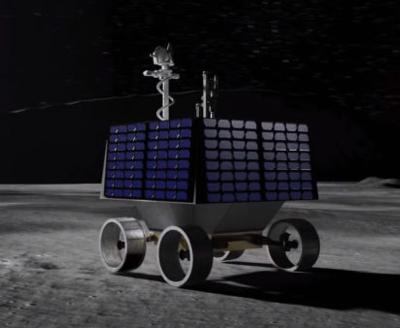NASA Enlists Commercial Partners to Fly Payloads To The Moon
NASA has issued another request to its 14 Commercial Lunar Payload Services (CLPS) partners to bid on flying a suite of payloads to the Moon. The request asks partners to fly 10 NASA science investigations and technology demonstrations to a non-polar region of the Moon in 2022.

Through the CLPS initiative, NASA taps its commercial partners to quickly land scientific instruments and technology demonstrations on the Moon. The initiative is a key part of NASA’s Artemis program. The science and technology payloads will help lay the foundation for human missions to the lunar surface. A provider will be selected by the end of the year, making it the sixth surface task award.
The payloads, collectively expected to be about 200 pounds (100 kg) in mass, include:
Regolith Adherence Characterization (RAC): will determine how lunar regolith sticks to a range of materials exposed to the Moon's environment at different phases of flight. Components will be derived from the Materials International Space Station Experiment (MISSE) facility currently on the International Space Station.
Next Generation Lunar Retroreflectors (NGLR): will serve as a target for lasers on Earth to precisely measure the distance between Earth and the Moon. These retroreflectors, one of which will fly on this mission, are designed to provide data that could be used to understand various aspects of the lunar interior and address fundamental physics questions.

Lunar Environment Heliospheric X-ray Imager (LEXI): will capture images of the interaction of Earth's magnetosphere with the flow of charged particles from the Sun, called the solar wind.
Reconfigurable, Radiation Tolerant Computer System (RadPC): aims to demonstrate a radiation-tolerant computing technology. Due to the Moon's lack of atmosphere and magnetic field, radiation from the Sun will be a challenge for electronics. This investigation also will characterize the radiation effects on the lunar surface.
The Lunar Magnetotelluric Sounder (LMS): designed to characterize the structure and composition of the Moon’s mantle by studying electric and magnetic fields. The investigation will make use of a flight-spare magnetometer, a device that measures magnetic fields, originally made for the Mars Atmosphere and Volatile EvolutioN (MAVEN) spacecraft currently orbiting Mars.
Lunar Instrumentation for Subsurface Thermal Exploration with Rapidity (LISTER): designed to measure heat flow from the interior of the Moon. The probe will attempt to drill 7 to 10 feet (2 to 3 meters) into the lunar regolith to investigate the Moon's thermal properties at different depths.
Lunar PlanetVac (LPV): a technology for acquiring and transferring lunar regolith from the surface to other instruments that would analyze the material, or put it in a container that another spacecraft could return to Earth.

Stereo Cameras for Lunar Plume Surface Studies (SCALPSS 1.1): will capture video and still-image data of the area under the lander from just before the point the engine plume first disturbs the lunar surface through engine shutdown. Long-focal-length cameras will determine the pre-landing surface topography. Photogrammetry will be used to reconstruct the changing three-dimensional surface during landing. Understanding the physics of rocket exhaust on the regolith, and the displacement of dust, gravel, rocks, etc., is critical to understanding how to best mitigate the ejecta during the terminal phase of flight/landing on the Moon, and other celestial bodies.
Electrodynamic Dust Shield (EDS): a technology that generates a non-uniform electric field using varying high voltage on multiple electrodes. The non-uniform field generates a dielectrophoretic (DEP) force which, in turn, moves the particles, and has potential implications for thermal radiators, spacesuit fabrics, visors, camera lenses, solar panels, and many other technologies.
Lunar GNSS Receiver Experiment (LuGRE): based on the U.S. Global Positioning System (GPS), LuGRE will continue to extend the reach of GPS signals and, if successful, be the first to discern GPS signals at lunar distances.
 Classic Aero-TV: Remembering Bob Hoover
Classic Aero-TV: Remembering Bob Hoover ANN FAQ: Follow Us On Instagram!
ANN FAQ: Follow Us On Instagram! ANN's Daily Aero-Linx (05.15.24)
ANN's Daily Aero-Linx (05.15.24) ANN's Daily Aero-Term (05.15.24):Altimeter Setting
ANN's Daily Aero-Term (05.15.24):Altimeter Setting Aero-News: Quote of the Day (05.16.24)
Aero-News: Quote of the Day (05.16.24)





